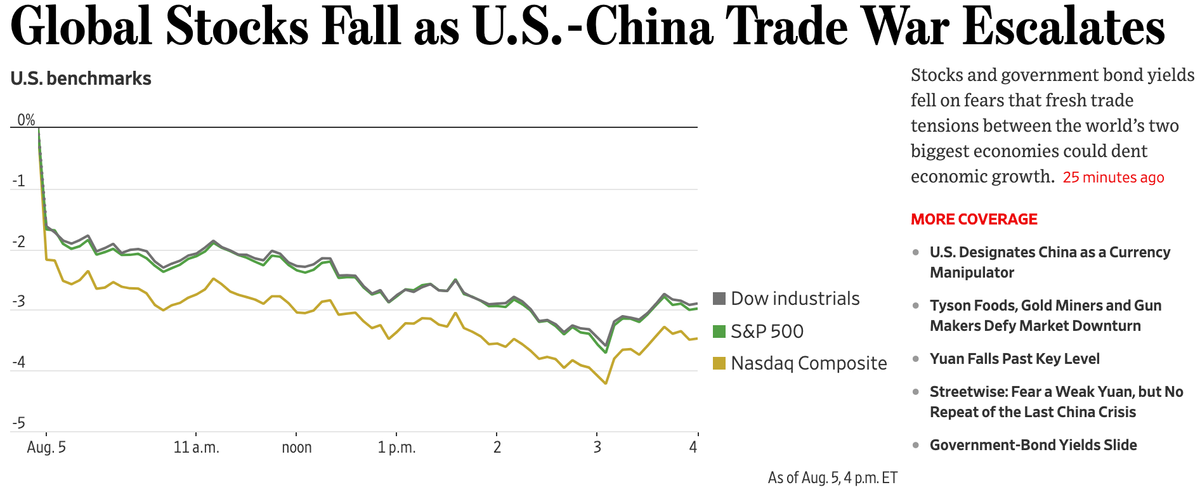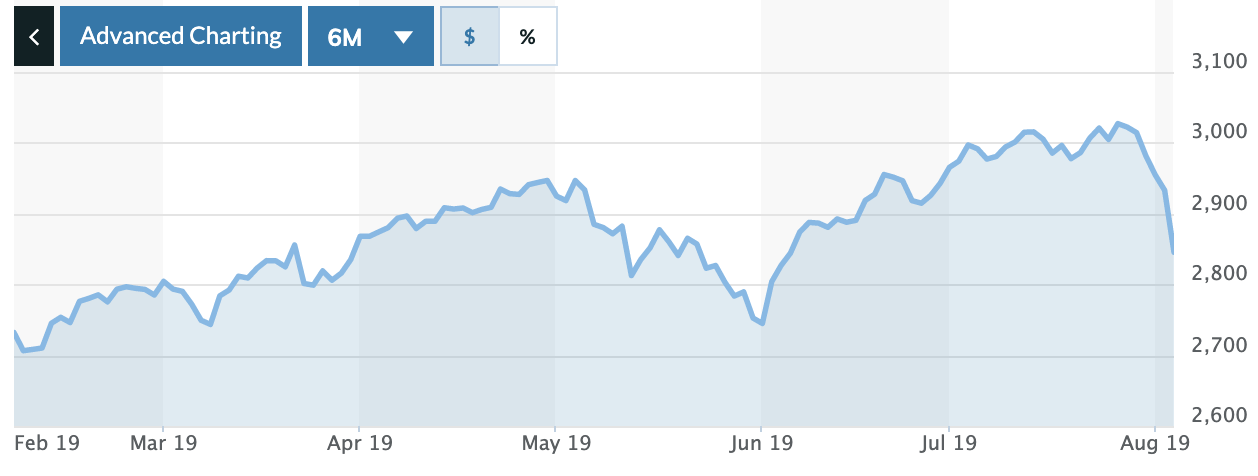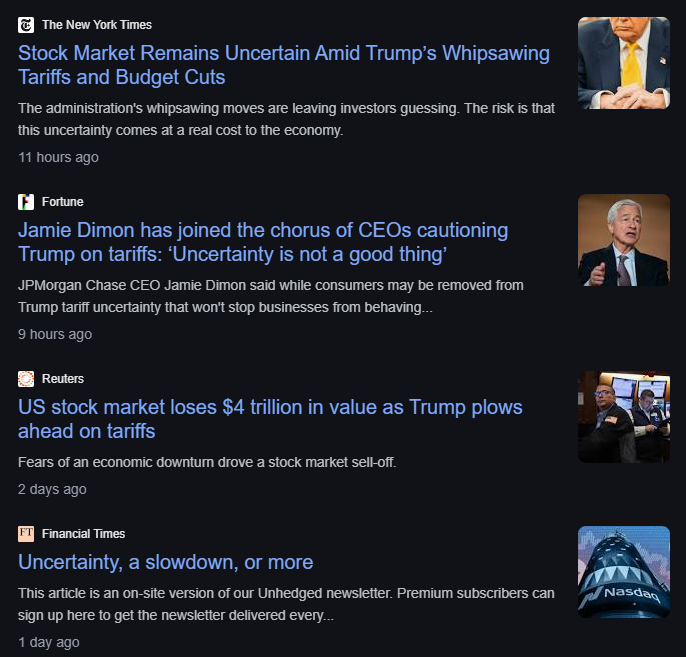Is the Bubble-Blowing Bull Market over?

The stock markets were down big today because: Trump China Trade War, tariffs, Yuan devaluation, suspension of Chinese imports of US agriculture, Hong Kong societal meltdown, Yield curve inversion, the Fed didn’t only cut 25 bps, negative interest rates in Germany, Asian stocks collapsing, Japan South Korea trade war, overvaluations, bad technicals…I’m sure I’ve missed a few headlines but you get the gist. There are a confluence of factors at which to point to explain the market’s sudden panicky sell off over the last week.

The sell-off has been relentless since the Fed said they were cutting rates, and despite my warnings to be defensive and cautious and to build up shorts and puts right before the markets tanked, I find myself amazed at the speed and magnitude of the action downward.
Just last week, which now seems like a long time ago in stock market time, I’d written:
“The big threat to this economy and its coinciding Bubble-Blowing Bull Market is the escalating Great Trade War. My concern about the potential for The Great Trade War to derail all of this is the first time in the last ten years that I’ve warned of possible derailment…
That said, the semiconductor industry is one of most exposed to China….Shorting SMH/buying puts on the SMH (a semiconductor ETF) are a good risk/reward way to get some hedge my long positions in TSM and Nvidia and other tech names — in case the market decides to freak out about China again (and/or if the impact of all the China tension/decline does start to really impact fundamentals in a meaningful way in the next few months).”
I’d also talked about how we might want to get much more defensive when the Fed starts cutting rates…the Fed started cutting rates last week and voila — the markets have tanked. On the other hand, the Fed set up could be conceived as bullish right now. Because the Fed only cut 25 bps and the market loves to anticipate another Fed cut as much as it actually likes the Fed cuts when they happen, the Fed has lots of room to build anticipation of more cuts. That bullish scenario depended/depends, however, on the markets looking past the Great Trade Wars of the 21st Century, and right now, the Fed isn’t looking like something that can save the hitherto Bubble-Blowing Bull Market against that confrontation.
Is the Bubble-Blowing Bull Market over? Was it over in the fourth quarter when the Nasdaq dropped more than 20%? Yes and no, depending on your perspective.
As I’d written back on December 26, right when the markets put in their bottom before starting this year’s big tear:
“Here’s something to think about though — What happens if it all works out? What if corporate earnings continue growing strongly over the next year and China and the US agree to what some sort of treaty (the US side of which, of course, would be written by and for giant US global companies which would probably mean the treaty would be very similar to what we’ve already been doing for the last twenty years and would be very profitable and bullish for US giant global companies)? What if the real estate markets takes off again?
Even if it doesn’t work out, how low will we go and how long will we be there?
I’ve talked for years (ironically) about how the economic/stock market bubbles and busts that we live through run on ‘Internet time’ which means they happen much more quickly than in decades past. Reading Ray Kurzweil’s “The Singularity Is Near” has helped me understand that I shouldn’t call this concept ‘Internet time’ because that’s a bit too limited of an explanation for it. The fact is that mankind itself, our society specifically, is growing our innovation, prosperity and economies exponentially.
And if there will be billions of times more technological advances in the next few decades as there was for the first few millions of years of mankind’s existence, then you can imagine that the ups and downs and bubbles and crashes will play out many times in the next few decades but that the general trend of technology, society, the economy and the most Revolutionary Stocks in the markets, will all be quite hockey up over those next few decades.
Where does this analysis leave us? Feet-to-fire, I think sentiment and the oversold status of the stock markets are likely to help the markets put in a bit of a short-term bottom here and that we could get a pretty big rally early next year.”
I’m not sure we’re quite at the same kind of a major bottom that we were putting in the last time I wrote that, but I do think it’s a better time to buy when every headline is negative, when fear is high, when the markets are getting oversold.
Clearly, I’m not trying to catch the exact bottom or the exact top of every market swing (though we did pretty darn well with our recent SMH short and puts). Also, while the markets seemingly crashed in the last week and the futures are pointing to another ugly open tomorrow, it’s important to remember that we’re still pretty much near all-time highs and the stock markets could fall quite a bit further just to get back to where they were a few months ago.

Your neighbors are probably talking about the stock market this week, but are they terribly scared about their stock investments yet? They probably were back in late December last year. Will they need to be scared about their stock investments, selling some of their positions and going to cash before the markets put in another meaningful bottom? I don’t think so, but leave yourself some room in case we’re headed to another December kind of mini-crash.
Don’t try to be a hero by trying to catch the exact bottom. Let the markets play out as they will. The best, most Revolutionary companies on the planet, many of which we own, are going to be just fine when these endless market and economic cycles play out. Buy fear, sell euphoria.




